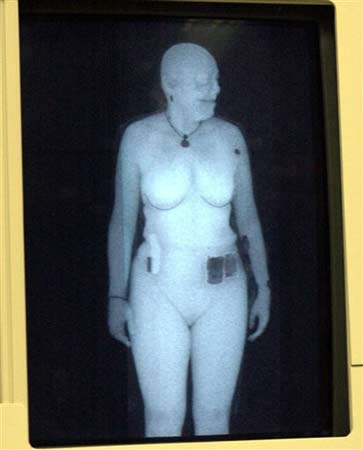The STP or CTP is used to ensure that the performance requirements for X-ray machines set out are met and maintained.Some times it is called Combined Test Piece (CTP) .The STP contains samples of organic and inorganic material, materials for resolution and penetration tests.

SINGLE WIRE RESOLUTION
(TEST No.1)
A set of un-insulated tinned copper
wires of size 26, 30, 35, 38, 40 and 42 SWG or corresponding AWG wires are placed on Perspex sheet. The
wires are laid out in 'S" shaped curves.
The wires are placed behind varying thickness
of aluminium. A quarter of the length of each wire is uncovered whilst the
remaining 3 quarters are covered by 3 wedges of aluminium, corresponding to
4.8mm (3/16"), 7.9mm (5/16") and 11.1mm (7/16") thickness. The minimum requirement
is to display 40 SWG wire not covered by step wedge for most of the machines. Metallic marker should be provided using
high-density material, so that SWG numbers in the Display are clearly visible.
USEFUL
PENETRATION (TEST No.2)
Defines what level of details can be seen behind a thickness
of known material. The requirement of this test is that the 26 SWG wire is seen
under step wedge of 5/16 thickness of Aluminium.
MULTI ENERGY X-RAY (TEST No. 3)
With multi-energy X-Ray, it should be possible to distinguish
between materials of different average atomic number. The use of sugar and salt
samples encapsulated on the test piece of CTP will check the material
discrimination facility. A different color of sugar and salt on display indicate that the sugar/salt samples are
shown in different color.
SIMPLE PENETRATION
(TEST No. 4)
This test defines what thickness of steel the machine should
be able to penetrate. The steel step wedge on the CTP has steps of 2 mm from 20
mm to 40 mm with a lead strip, 1.5mm in thickness to check that the machine is
above or below the requirement. The requirement will be different for different
KV machines.
SPATIAL RESOLUTION
(TEST No. 5)
This test defines the ability of the
system to distinguish and display objects which are close together. The CTP has
copper plate with three sets of gratings (1.0mm, 1.5mm and
2.0mm). Each set consists of a horizontal group and a vertical
group. The requirement is that a vertical and horizontal grating can be seen.
THIN METAL IMAGING
(TEST No. 6)
This is to test the machine‘s ability
to image thin metal. This involves a three thin squares of steel of 0.15mm,
0.10mm and 0.05mm thickness placed in row and the requirement is to image steel
strip of 0.1 mm thickness.
THIN ORGANIC IMAGING
(TEST No. 7)
This is to test the machine‘s capability for thin organic
imaging. The test object incorporates plastic of various thicknesses and the
requirement is to image plastic of 1 mm thickness.
IQI SENSITIVITY (TEST
No. 8)
This is to determine the image quality indicator (IQI) sensitivity of the X-ray system. The requirement is to demonstrate 2% IQI sensitivity.
The CTP must be placed with its longest
dimension parallel to the direction of belt.
The CTP should be
placed in the best position for optimum performance.The optimum position of the STP on the belt depends on the x-ray source and detector arrangements, with the aim being to obtain the best result possible.




 rmits the slow and expensive EDS machines to be used only for exceptional bags.
rmits the slow and expensive EDS machines to be used only for exceptional bags.




